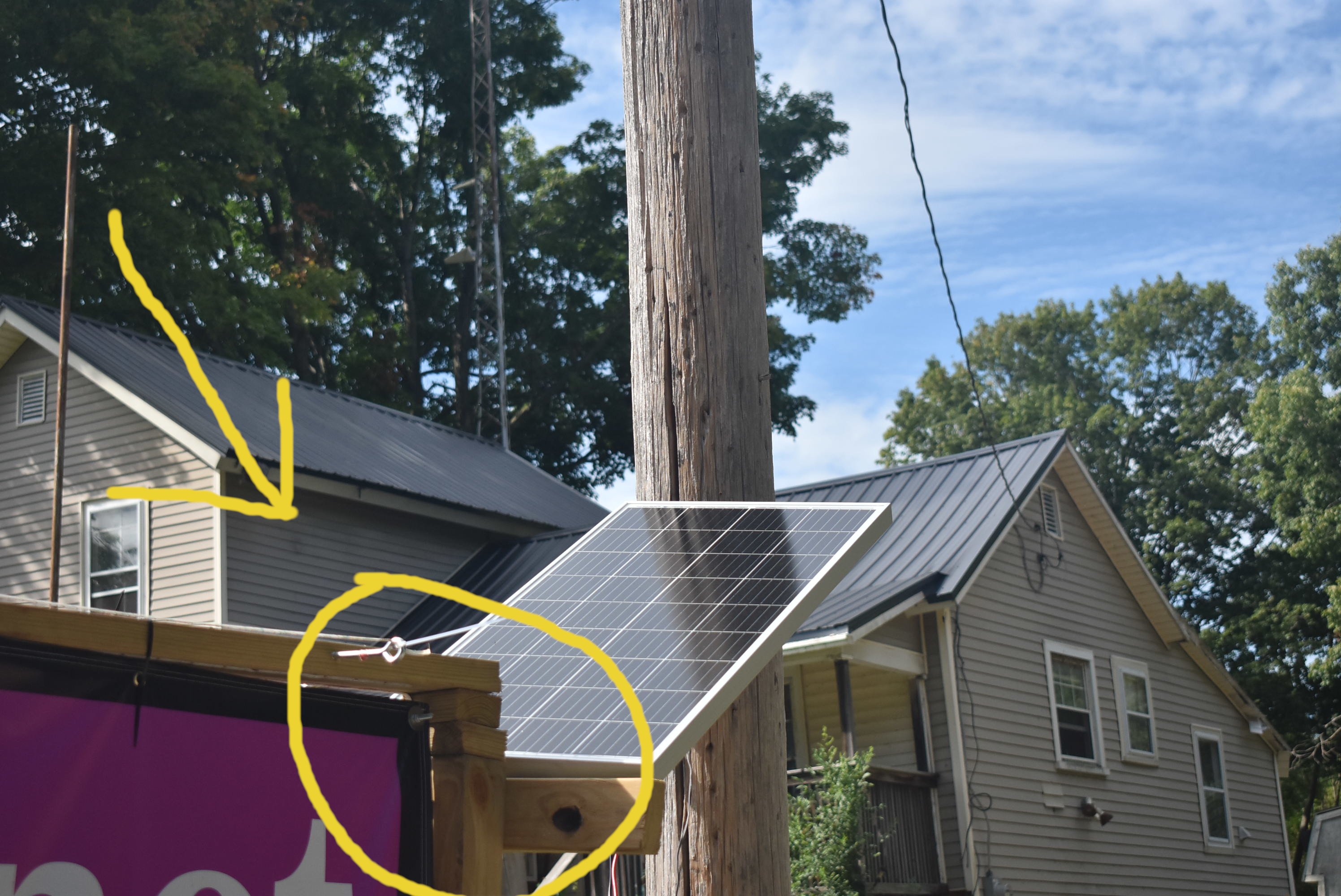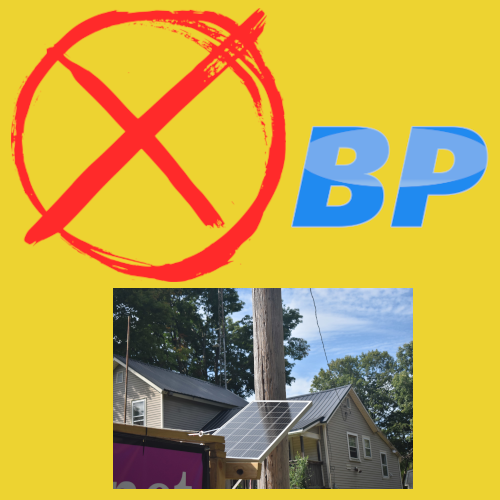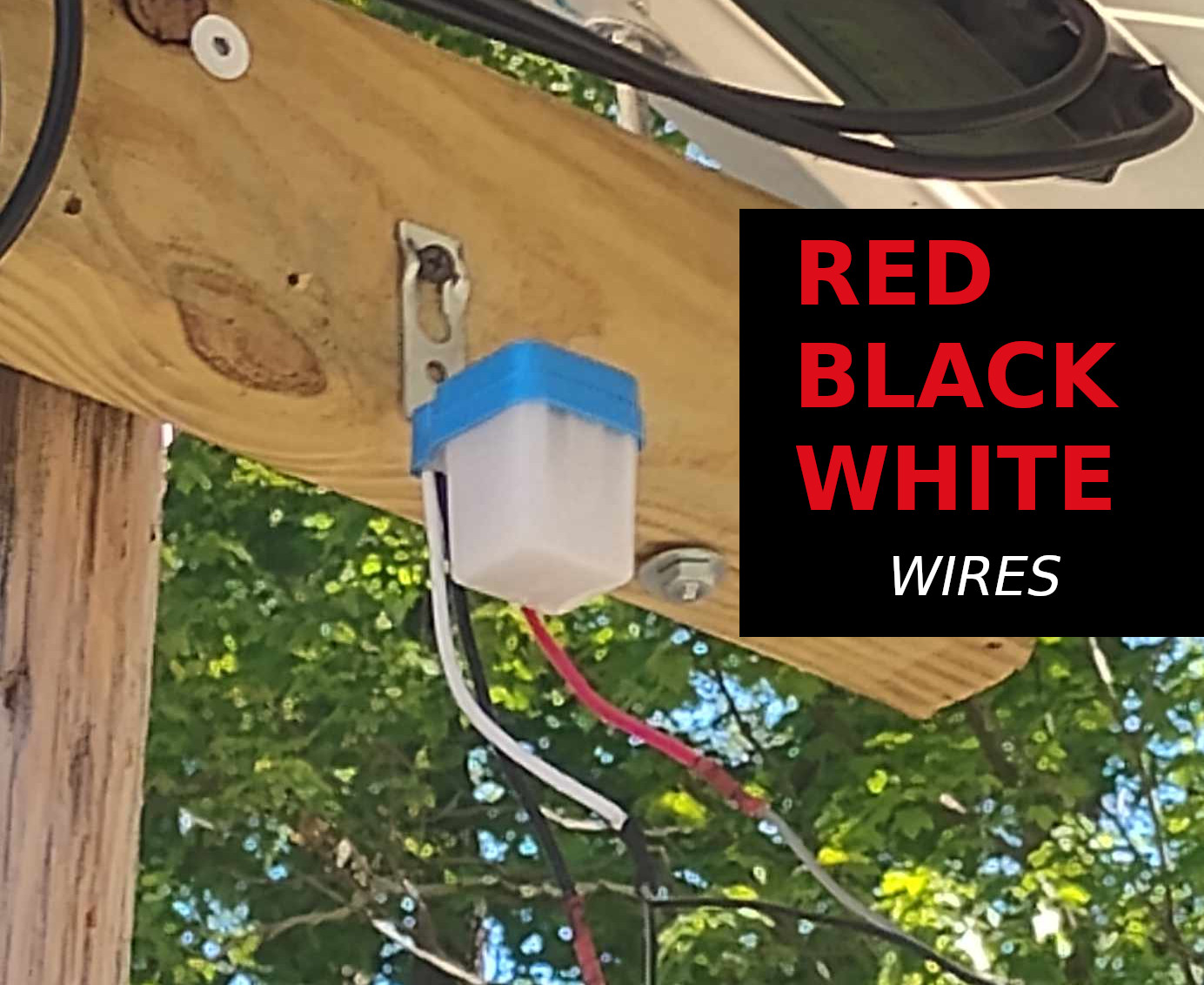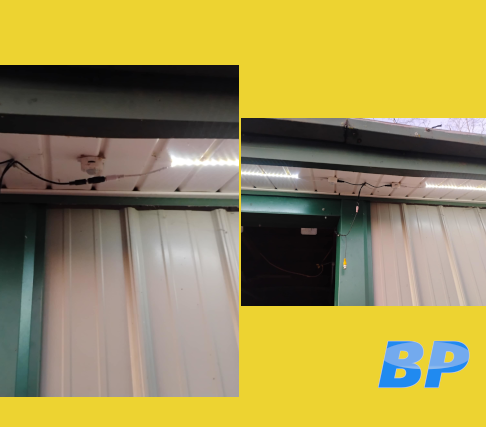-
Mistake in My ECO-WORTHY Solar Installation and Solutions
Over the summer I installed a road sign for Good Rock Radio and needed lighting on it. I decided to give eBay's most popular and affordable solar panel, the eco-worthy 100 watt solar panel a try. During the summer amazing results were achieved.
I mounted my 100 watt eco-worthy solar panel between the telephone pole and the street sign. During the summer everything worked no problem however as fall is here and winter is arriving, the days are getting shorter and solar production time is not as great as it was during the summer.
As of writing this post I am faced with a problem in my 2nd solar system. The lights are no longer staying on all night. This means we are not producing as much electricity during the day at this time as we were back in the summer.
A quick check with the amp meter shows we are only producing 1 AMP max on gloomy days with some days going as low as .5 amps from 5.0 AMPS!
The Mistake!!
Not producing and or storing enough electricity in the fall season for my needs. Did not account for lower solar production in the off seasons. Considering off seasons are the non-spring or summer seasons. The lights only operate part time, sometimes solidly all night and other nights shut off after midnight.
Planning Notes
Essentially my mistake is due to a lack of planning. In my case, it is OK that the lights are part time. If I absolutely had to have lighting all night, proper planning would be essential. Things to consider include how many amp hours your lights would need times the number of lights you have to operate and make sure you have enough amp hours at a minimum lined up to meet your minimum requirements. Minimum requirements would be how many amps a given solar panel can produce on its worst days.
If the sun goes down at 6:32 PM and comes up at 7:00 AM how many hours of production is that? Approximately 11.4 hours however the first 2 hours will be lower production and the last 2 hours will be lower production. That leaves us with only 8 hours of decent power production. Assuming a day is gloomy, that means you are only producing 0.5 amps x 8 hours which is only 4 amp hours! In this case I would need two solar panels at 100 watts to operate 8 amp hour lighting.
Plausible Solutions
- Settle for part time lighting. Most days, despite diminished solar production, will see 1.5-3.0 AMPS through out the day. This leads to about 5 hours of lighting time after nightfall. While some days produce enough power like when there are clear skies and no clouds other days can be abysmal .
- Purchase additional solar panels. Considering the affordability in monocrystalliene solar panels and especially the eco-worthy solar panels, purchasing additional panels is not off the table. The only problem with this, in my case, is mounting space.
- Move the solar panel for optimal power production. In my situation and probably other situations where the system is near the road, space is kind of limited. I mounted my solar panel in the most efficient spot I could get it, however the sign itself sort of blocks some of the sunlight. Mounting it on an angle on the top of the sign would more than likely bring the amperage up to 0.7 from 0.5 on gloomy days which would be enough to gradually charge the car battery.

- Charge the battery from grid electricity. With the use of a long extension cord and a 12V battery maintainer charger, the battery could be "topped off" or charged via grid electricity in combination of solar power. Essentially the on-grid maintainer and the solar charge controller would be wired in parallel. This allows for the battery to be charged by both objects at the same time. Considering the voltage remains pretty steady on the eco-worthy solar panel, even in gloomy days, a parallel configuration would allow amps to flow into the battery from the grid. This would then get back to the need for a trench, however an extension cord could easily be rolled up when the battery is charged. In my case, a 75 ft extension cord plus the use of a battery maintainer charger device would get my lights on all night and on into the morning.
Solar Panels: Links
Hopefully you can look at my mistakes to help plan for your solar system. The following links will help you get your solar system up and running utilizing things like ECO-WORTHY solar panels. You can mitigate a lack of solar production with a battery maintainer. The following links consists of betterparts.biz and walmart.com
Related SOLAR Posts





